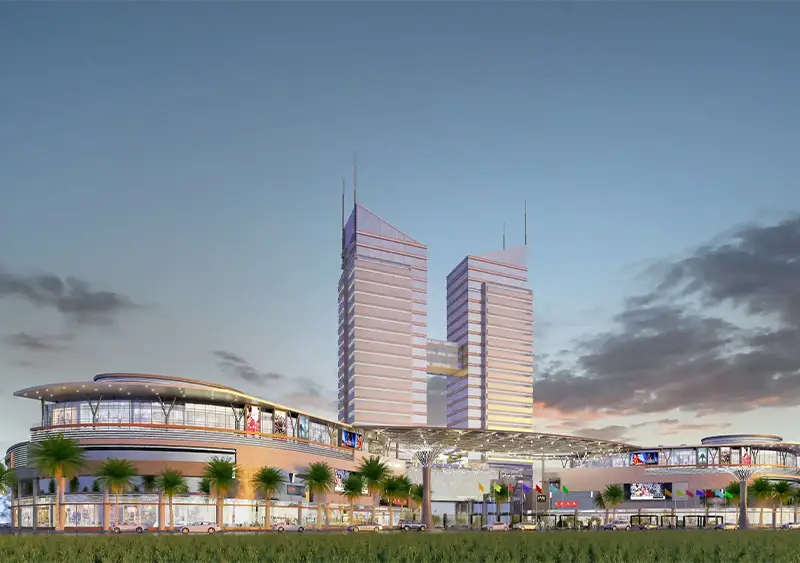3D Rendering Trends the US Market Is Leading in 2025
"3D rendering, redefined by the US market."

5 MIN READ
June 2, 2025

Written By
Sasikumar Janakiraman
Now it’s front and center.
In the US, rendering has become part of the sales cycle, the design workflow, and the customer experience. Furniture brands are showcasing collections entirely through CGI. Real estate firms are selling units before the foundation is laid. Interior designers are walking clients through virtual spaces with real-time lighting changes.
What’s making all this possible isn’t just better tools. It’s the shift in how rendering is being used faster, smarter, more immersive. And that shift is being led by a few key trends changing the game across industries.
Why the US Market Is Shaping the Future of 3D Rendering?
Three forces are driving this transformation.
First, content demand is exploding. Marketing teams need assets faster than ever, and product teams want visuals that update in real time. Static images and traditional photoshoots can’t keep up with the speed of launches anymore.
Second, industries are overlapping. An architecture firm is expected to deliver like a creative studio. A furniture company now competes with fashion brands on digital storytelling. This blend of expectations means 3D rendering services have to do more than look good; they have to be strategic, scalable, and adaptable.
Third, clients are becoming more visually literate. They know what a good render looks like. They expect realism, depth, and interaction. And they can tell when something looks flat or outdated.
This pressure is exactly what’s pushing US brands to the edge of innovation and why the trends we’ll cover next aren’t just upgrades. They’re the new standard.
The Biggest 3D Rendering Trends Dominating 2025
AI-Assisted Rendering Is Streamlining the Process
AI isn’t replacing artists, it's enabling them to work faster, smarter, and with more creative control.
In leading US studios, AI is already automating repetitive steps like lighting setup, material application, and even camera angle suggestions. These tools aren’t producing final renders on their own, but they’re speeding up everything that leads to it. What once took hours of manual tweaking can now be done in minutes with intelligent recommendations.
Generative AI is also entering the scene. Designers are feeding basic prompts into tools that generate concept-level visuals instantly giving clients something to react to while the team builds the final version. This kind of speed has changed how early-stage feedback works.
The impact? Quicker approvals, less burnout, and a creative process that keeps pace with business timelines. Check out our guide on whether AI can create quality 3D models.
Real-Time Rendering Is Becoming the New Expectation
Once reserved for gaming and high-end simulation, real-time rendering is now being used by architecture firms, eCommerce brands, and product designers.
With platforms like Unreal Engine and Unity, creative teams can walk clients through virtual spaces, let them change materials on the fly, and preview lighting scenarios in real time. It’s not just impressive, it's practical. Clients can make decisions faster because they’re seeing how a space or product behaves, not just how it looks.
Real-time rendering is also powering configurators and interactive demos on websites. Instead of browsing static images, users explore products from every angle, customize features, and feel ownership before they even click “buy.”
The shift isn’t just technical, it's emotional. Real-time experiences make visuals feel alive.
Cloud-Based Rendering Is Replacing Local Setups
Rendering used to require powerful in-house hardware, expensive GPUs, and large internal teams. That’s changing quickly in the US market.
Studios and companies are now moving their rendering workflows to the cloud using platforms like Chaos Cloud, Autodesk Cloud Rendering, and Amazon Nimble Studio. This shift gives them on-demand rendering power, without the overhead. Teams can collaborate from anywhere, render simultaneously across projects, and scale resources up or down instantly.
For fast-paced agencies and distributed teams, cloud rendering removes the biggest friction: time. There’s no queue, no hardware crash risk, no location limits. Just consistent, professional output.
It also opens the door for outsourcing. US brands can now partner with international rendering specialists and plug them directly into their workflow without tech barriers.
AR and VR Are Taking Client Presentations to the Next Level
3D isn’t flat anymore and neither are client expectations.
More firms are building presentations that go beyond screens. With AR and VR integrations, they’re inviting clients to explore virtual showrooms, walk through future buildings, and interact with products in a fully immersive way.
In retail, AR is helping consumers place virtual furniture in their homes before buying. In real estate, VR is letting buyers tour unbuilt properties with full-scale perspective and lighting realism. These experiences aren’t gimmicks, they're decision-making tools.
As headsets become more affordable and smartphones more capable, AR and VR are no longer “nice to have.” They’re becoming essential for premium client experience.
Photorealism Is the New Benchmark for eCommerce
There was a time when a good render just needed to be clean. Now, it needs to be indistinguishable from a real photo.
Photorealism has become the standard for US-based product visualizations especially in industries like furniture, home decor, appliances, and luxury goods. Consumers zoom in. They expect to see stitching, reflections, shadows, and depth. If the render falls short, so does their confidence in the product.
This shift is also performance-driven. Brands that use hyper-realistic visuals often see higher conversions, better ad engagement, and reduced returns. Why? Because customers feel like they’ve “seen” the product before it arrives.
The best part? These results are being achieved without a single physical prototype. Just pixels, precision, and strategic lighting.
Final Thoughts
The US market isn't following 3D rendering trends. It's setting them. From AI-assisted workflows to real-time walkthroughs, the expectations around visual content are being rewritten in real time.
For creative teams and brands, this isn’t just a tech upgrade. It’s a creative shift that opens the door to faster decision-making, richer storytelling, and visuals that do more than just “look good.” They sell, persuade, and convert.
At a time when visuals are moving faster than ever, the question isn't whether you'll adopt these trends. It's who you'll trust to bring them to life.
At ZealousXR, we don't just follow trends, we help our clients lead them. Let’s create visuals that move your brand forward.
About the writer :
Sasikumar Janakiraman, as the Creative Director at Zealous Services, brings a unique mix of creativity and technical ... skill. He’s passionate about 2D and 3D design, leading teams to create stunning 3D models and visualizations. Sasikumar loves working closely with clients, making sure their ideas come to life in the best possible way. His goal? To make design feel simple and exciting.
Read MoreFrequently Asked Questions (FAQ)
Why is the US leading in 3D rendering adoption?
The US market has a unique mix of tech-forward industries, competitive branding demands, and fast-paced production cycles. This combination has made companies more open to adopting advanced rendering workflows like AI tools, real-time engines, and cloud-based platforms.
How does real-time rendering benefit client presentations?
Real-time rendering lets clients interact with designs on the spot changing materials, lighting, or angles without delay. It speeds up decision-making and creates a more immersive, collaborative experience compared to traditional static visuals.
Is photorealistic rendering worth the extra investment?
Absolutely. In sectors like furniture and product retail, lifelike visuals build trust and boost conversion rates. They reduce the need for physical prototypes and help buyers feel confident in what they're purchasing, especially in online environments.
What industries in the US are using 3D rendering the most right now?
Real estate, furniture, architecture, interior design, and eCommerce are leading adopters. These sectors rely heavily on visuals to communicate value before a product or space exists physically, making 3D rendering a key asset.
How can ZealousXR support US brands with advanced rendering needs?
ZealousXR delivers high-end, photorealistic renders using the latest tools in real-time, cloud, and AI-assisted workflows. Whether it’s a one-off project or a scalable rendering pipeline, we provide tailored solutions for brands that value both creativity and speed.
Table Of Contents
Why the US Market Is Shaping the Future of 3D Rendering?
The Biggest 3D Rendering Trends Dominating 2025
AI-Assisted Rendering Is Streamlining the Process
Real-Time Rendering Is Becoming the New Expectation
Cloud-Based Rendering Is Replacing Local Setups
AR and VR Are Taking Client Presentations to the Next Level
Photorealism Is the New Benchmark for eCommerce
Final Thoughts